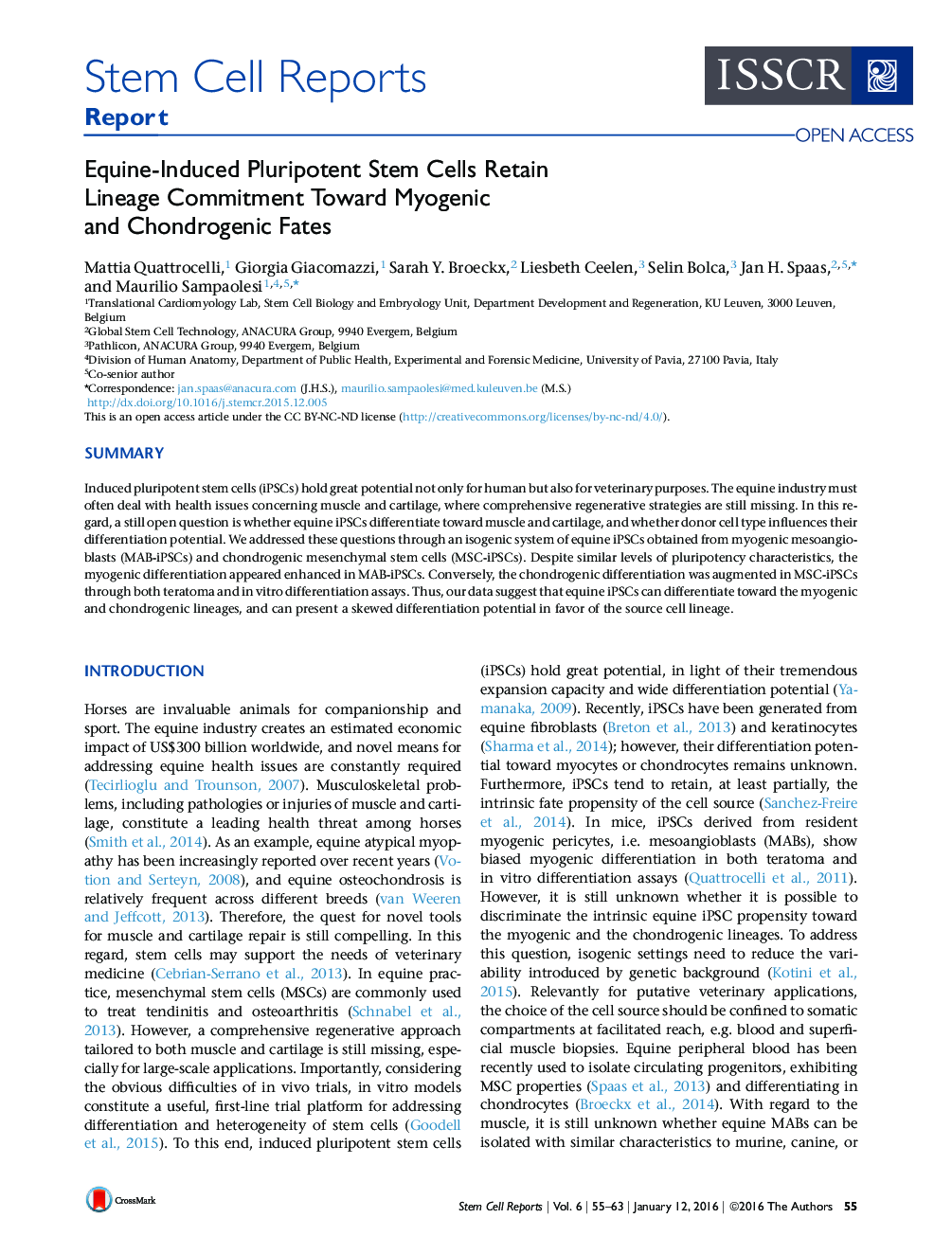| Article ID | Journal | Published Year | Pages | File Type |
|---|---|---|---|---|
| 2093288 | Stem Cell Reports | 2016 | 9 Pages |
•Equine mesoangioblasts (MABs) are prospectively isolated from syngeneic horses•Equine iPSCs are obtained from isogenic MABs and MSCs with similar characteristics•Equine MAB-iPSCs are more prone to the muscle lineage in vivo and in vitro•Equine MSC-iPSCs display higher propensity for the chondrogenic lineage
SummaryInduced pluripotent stem cells (iPSCs) hold great potential not only for human but also for veterinary purposes. The equine industry must often deal with health issues concerning muscle and cartilage, where comprehensive regenerative strategies are still missing. In this regard, a still open question is whether equine iPSCs differentiate toward muscle and cartilage, and whether donor cell type influences their differentiation potential. We addressed these questions through an isogenic system of equine iPSCs obtained from myogenic mesoangioblasts (MAB-iPSCs) and chondrogenic mesenchymal stem cells (MSC-iPSCs). Despite similar levels of pluripotency characteristics, the myogenic differentiation appeared enhanced in MAB-iPSCs. Conversely, the chondrogenic differentiation was augmented in MSC-iPSCs through both teratoma and in vitro differentiation assays. Thus, our data suggest that equine iPSCs can differentiate toward the myogenic and chondrogenic lineages, and can present a skewed differentiation potential in favor of the source cell lineage.
